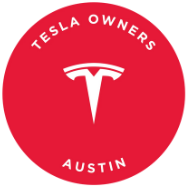Tesla has recently rolled out a new feature aimed at improving charging times for its vehicles in extremely cold weather conditions. The company made the announcement on Christmas Eve, revealing that Supercharger battery heating is now active at V3 and V4 Superchargers in cold climates. This feature specifically targets Model 3 and Model Y vehicles equipped with standard range, rear-wheel drive configurations.
According to Tesla Charging, when plugging in at these Superchargers, the batteries for Model 3 and Model Y vehicles will be pre-heated. This pre-heating process helps to get vehicles back on the road faster in extreme cold conditions. The company emphasized the importance of preconditioning before Supercharging, as it leads to the fastest charging times.
Max de Zegher, Tesla’s Director of Charging, highlighted the engineering behind this new feature on X. He explained that an AC ripple current coming from the Superchargers is used to warm up the cold-soaked LFP vehicles. This innovative approach allows the vehicles to get back on the road up to 4 times faster. Zegher pointed out that this method is made possible through Tesla’s vertical integration and the work of its talented engineers.
When questioned about how this new feature differs from the standard process, Zegher clarified that the Supercharger sends an AC ripple current through the battery to assist with warming it up, as opposed to relying solely on the battery itself to warm up. This marks the first time such a method has been implemented.
To ensure optimal charging performance, Tesla continues to recommend preconditioning the battery before arriving at a Supercharger. This can be easily done by selecting a Supercharger as the destination on the Tesla’s navigation system. The vehicle will automatically start preconditioning as it approaches the charger, making the process seamless and efficient.
Overall, Tesla’s introduction of Supercharger battery heating at select Superchargers in cold climates represents a significant advancement in improving charging times for its vehicles in extreme weather conditions. This new feature underscores the company’s commitment to enhancing the overall driving experience for its customers.

